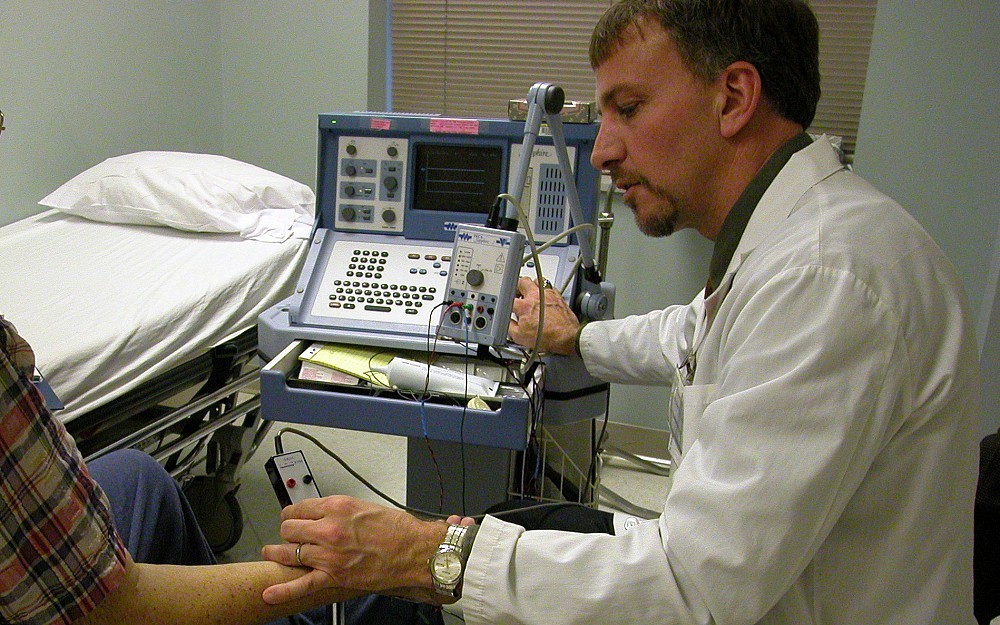
UC HEALTH LINE: Understanding Pain With a Simple Test
CINCINNATINerve pain can affect many parts of the body, but determining the exact source of pain and measuring its severity isnt always easy.
UC physician Mark Goddard, MD, says an EMG (electromyography) test is a good way to localize pain and tell you how a nerve injury is contributing to it.
EMG allows physicians to see the level of electrical activity inside a muscle in real time, a reflection of the nerve input to that muscle. That electrical output, Goddard says, provides information about nerve pain that a magnetic resonance image (MRI) might not reveal.
An MRI can offer pictures of nerves, but doesnt always explain why a nerve is affected or to what extent, says Goddard, associate professor and chair of UCs physical medicine and rehabilitation department. For example, a person might experience leg pain, but an MRI scan of the back or leg might come back normal. An EMG can offer a clearer picture of whats happening inside affected muscles and lead us back to the exact spot thats causing pain.
EMG is most often used for people with neck, back or limb pain caused by pinched nerves or slipped discs, and can also be used to test for nerve pain, weakness or numbness associated with diabetes or other medical conditions.
An EMG test begins with a nerve connection study. During this session, small electrical shocks, similar in feeling to static electricity, are used to stimulate nerves.
The actual EMG test follows the nerve connection study. During an EMG, Teflon-coated pin electrodes are placed directly into the muscle. No shocks are administered. The pin serves as a conductor for electrical activity and provides an on-screen readout of activity within the muscle.
Goddard says EMG is not only helpful for diagnosis, but also for providing prognosis for intervention. For example, EMG can be used to determine the right course of treatment for carpal tunnel syndromea condition resulting when the nerve running from the forearm into the hand becomes pressed or squeezed at the wrist.
EMG is also used in trauma patients to determine whether pinched or damaged nerves are responsible for changes in limb function and can also be used to diagnose certain neurologic disorders that cause weakness, such as Guillain-Barre syndrome.
Physician referral is often needed for an EMG test. For more information, call (513) 418-2707.

Mark Goddard, MD
Tags
Related Stories
UC study explores fertility treatment risks for kidney...
July 7, 2025
Women with kidney transplants who use assisted reproductive technology (ART) to conceive might face higher risks of complications during pregnancy, according to new research from the University of Cincinnati College of Medicine.
First low FODMAP–Mediterranean diet comparison reveals clear...
July 2, 2025
The low-FODMAP diet offers greater relief in people with symptoms of diarrhea or mixed subtypes of irritable bowel syndrome compared to the Mediterranean diet, according to a study published recently in the journal Neurogastroenterology & Motility.
Optimizing emergency care for neurotrauma patients
July 2, 2025
The University of Cincinnati's Natalie Kreitzer, MD, was featured in an Emergency Medicine News article discussing new practices to optimize emergency care for patients with traumatic brain injuries.
